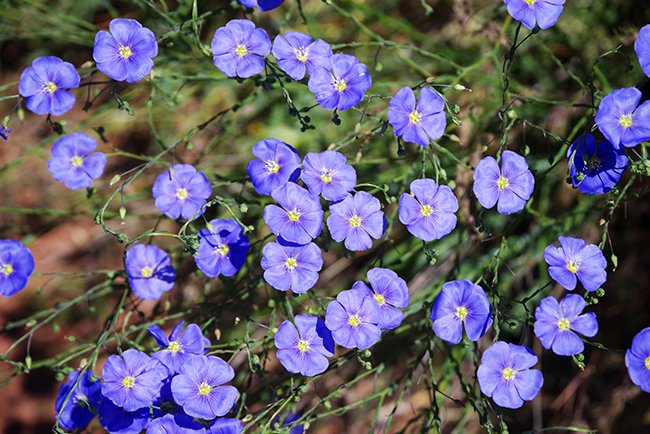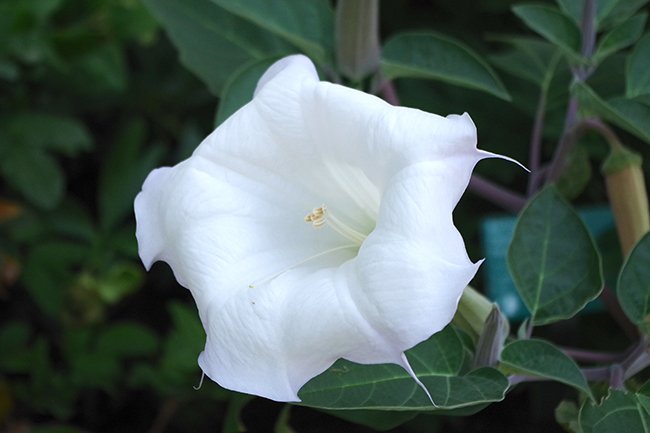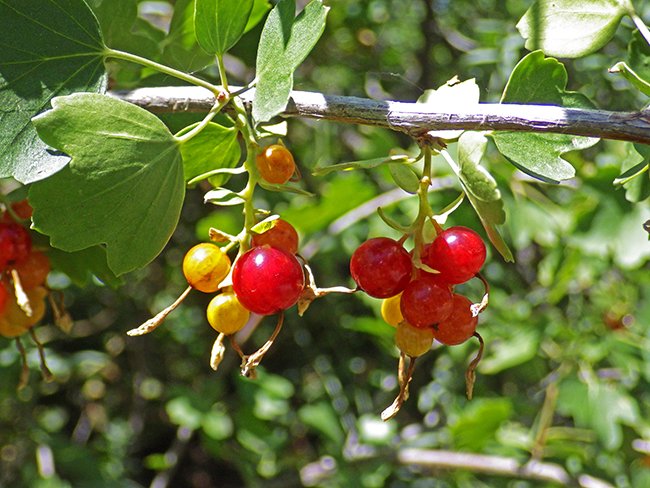Categories
Native American Ethnobotany of Utah
Submitted: Nov. 16, 2024, 11:10 a.m.
November is National Native American Heritage Month, providing the perfect opportunity to celebrate one of my favorite topics—Native American ethnobotany! Ethnobotany is the study of the relationships between people and plants, and reveals the incredible knowledge Native American communities possess about local plants and their many uses. Along the Wasatch Front, we are rooted in a history rich with Indigenous culture. Many plants in the Garden hold cultural significance to Utah's Native American Tribes, and I’m thrilled to highlight some of them this month.

Prairie Flax (Linum lewisii)
This native Utah perennial is highly valued for its versatility as a source of medicine, food, and fiber. The Shoshone and Gosiute Tribes make poultices from the plant to treat swelling, while the Shoshone also prepare an infusion from the roots to use as an eye medicine. The Great Basin Indian Tribe uses the roots and stems to create string.

Sacred Thornapple (Datura wrightii)
This dusk-blooming native perennial is used ceremonially, medicinally, and as a food source. Many Tribes use it as a hallucinogen in ceremonial practices. Hopi medicine men chew the roots to induce visions for diagnosing ailments and the Shoshone drink a decoction of the roots to enter a trance state and experience visions. The Navajo dry the fruit—after soaking and boiling it—to preserve it for winter consumption.

Golden Currant (Ribes aureum)
This deciduous native shrub is cherished for its medicinal and nutritional value. The Paiute and Shoshone Tribes prepare a decoction from the inner bark to treat leg swellings. The Paiute and Ute Tribes enjoy the berries as a food source, eating them fresh or drying them for later use.

Mormon Tea (Ephedra viridis)
This shrub has medicinal, nutritional, and dyeing properties. While its name suggests a connection to the Mormon community, it was actually the Native Americans in the region who first taught them how to prepare tea from this plant. The Navajo use a decoction of the plant’s tops to treat coughs, roast the stems to make tea, and chew the stems to relieve thirst during long journeys away from water sources. They also boil the twigs and leaves to create a light tan dye.
To honor Native American Tribes, we invite you to explore the Garden through the lens of people who are deeply intwined with nature, where plants provide medicine and building materials, and in turn, humans provide care and protection. To help guide you, visit the Children's Garden and look for red signs (instead of our usual green) to identify plants significant to Tribes of southern Utah.
___________________________________________
Photos by, Jason W. Baker and Heidi M. Simper